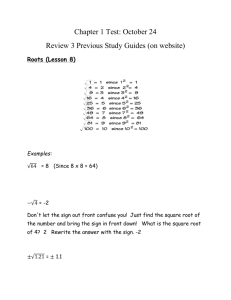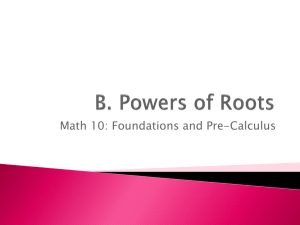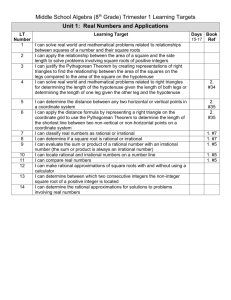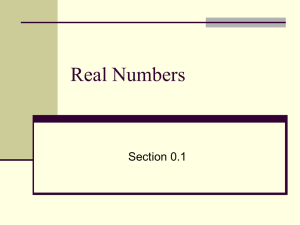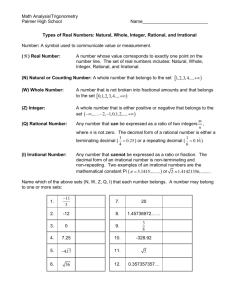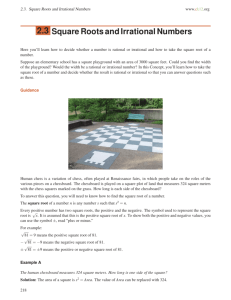Name 8 th Grade PMI Numerical Roots and Radicals Unit 2
advertisement
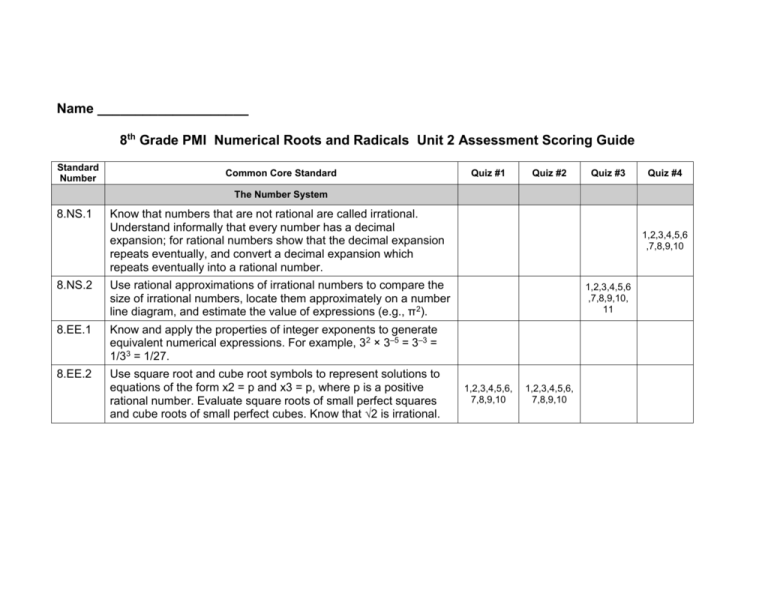
Name ____________________ 8th Grade PMI Numerical Roots and Radicals Unit 2 Assessment Scoring Guide Standard Number Common Core Standard Quiz #1 Quiz #2 Quiz #3 Quiz #4 The Number System 8.NS.1 Know that numbers that are not rational are called irrational. Understand informally that every number has a decimal expansion; for rational numbers show that the decimal expansion repeats eventually, and convert a decimal expansion which repeats eventually into a rational number. 8.NS.2 Use rational approximations of irrational numbers to compare the size of irrational numbers, locate them approximately on a number line diagram, and estimate the value of expressions (e.g., π2). 8.EE.1 Know and apply the properties of integer exponents to generate equivalent numerical expressions. For example, 32 × 3–5 = 3–3 = 1/33 = 1/27. 8.EE.2 Use square root and cube root symbols to represent solutions to equations of the form x2 = p and x3 = p, where p is a positive rational number. Evaluate square roots of small perfect squares and cube roots of small perfect cubes. Know that √2 is irrational. 1,2,3,4,5,6 ,7,8,9,10 1,2,3,4,5,6 ,7,8,9,10, 11 1,2,3,4,5,6, 7,8,9,10 1,2,3,4,5,6, 7,8,9,10 Standard Number Common Core Standard Quiz #5 Unit Exam # Correct/ # Possible 2 /11 3,5,11 /14 4,7,9 /14 1,6,8, 10,12 /25 The Number System 8.NS.1 8.NS.2 8.EE.1 8.EE.2 Know that numbers that are not rational are called irrational. Understand informally that every number has a decimal expansion; for rational numbers show that the decimal expansion repeats eventually, and convert a decimal expansion which repeats eventually into a rational number. Use rational approximations of irrational numbers to compare the size of irrational numbers, locate them approximately on a number line diagram, and estimate the value of expressions (e.g., π2). Know and apply the properties of integer exponents to generate equivalent numerical expressions. For example, 32 × 3–5 = 3–3 = 1/33 = 1/27. Use square root and cube root symbols to represent solutions to equations of the form x2 = p and x3 = p, where p is a positive rational number. Evaluate square roots of small perfect squares and cube roots of small perfect cubes. Know that √2 is irrational. 1,2,3,4,5,6, 7,8,9,10a, 10b


